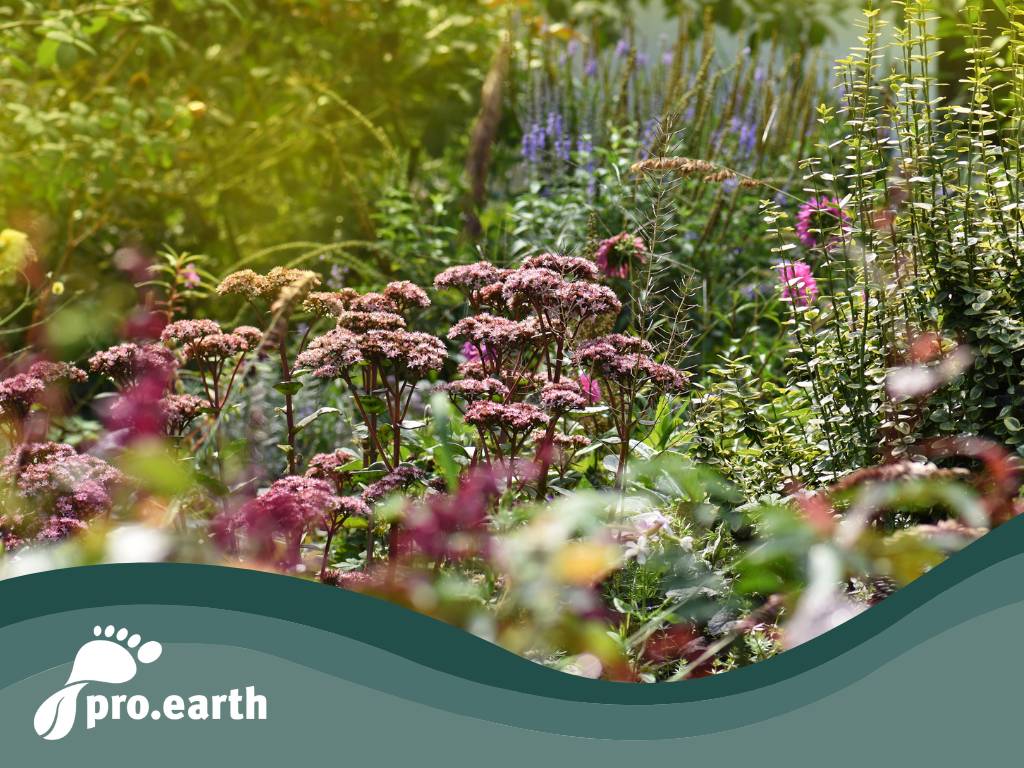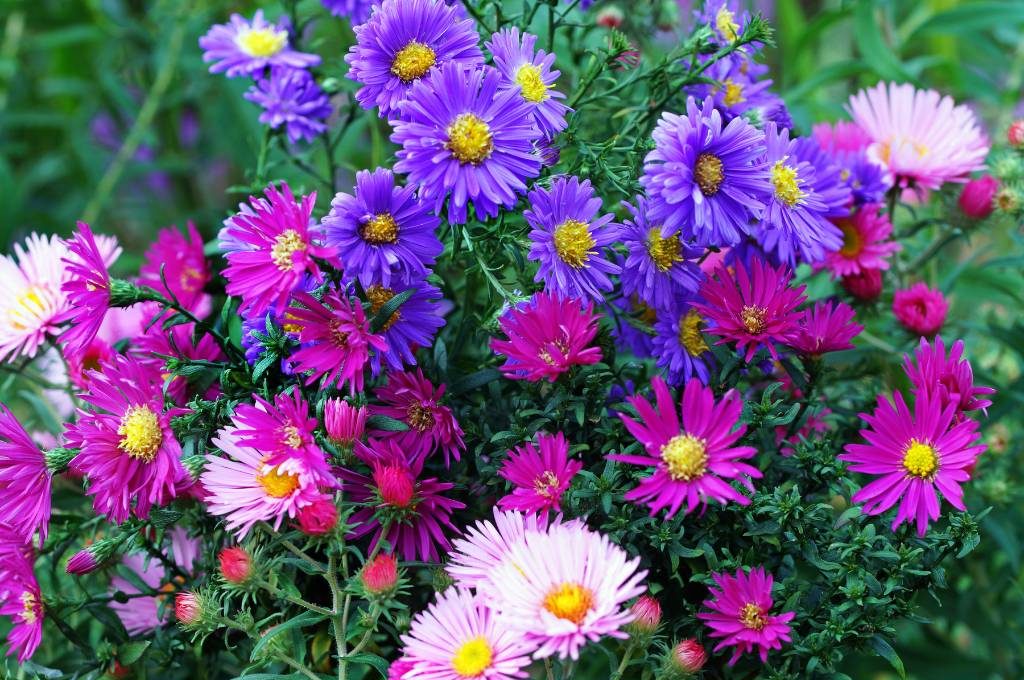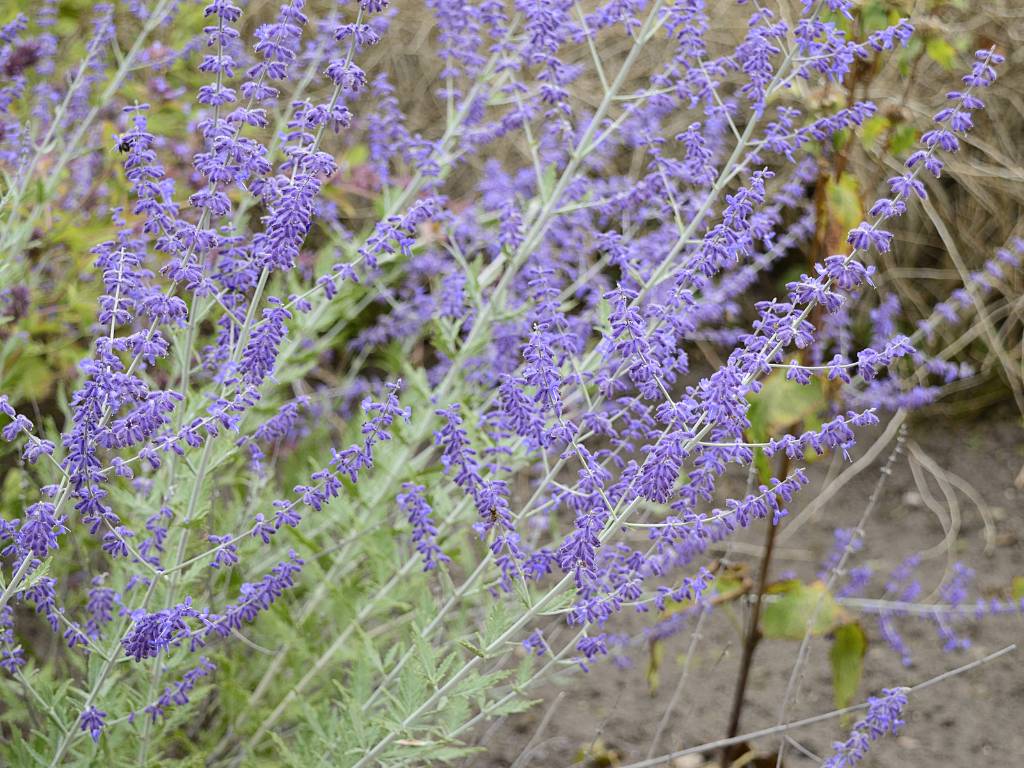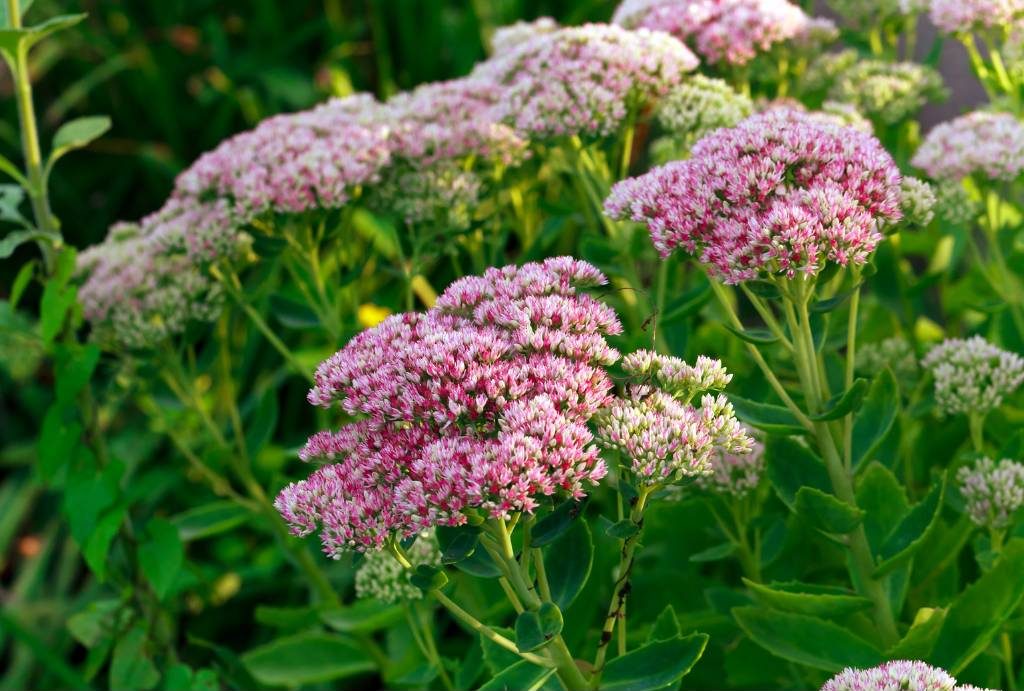Late-flowering insect feast

The days may not be getting cooler, but they are getting shorter and the flowering season for many perennials and shrubs is over. Today, we #Beetschwestern want to give you a brief overview of plants that are now in bloom and serve as food for many insects.
In our garden, August to September is a transitional period in which not too much blooms - compared to the months of May to July. And now the fall bloomers are beginning to delight our eyes.
Common ivy (Hedera helix)
First and foremost is the ivy, in our case the common ivy, which grows directly on the house wall, but also on the old spruce trees.
In the video you can see how many insects visit the ivy flowers. This climbing plant, which grows both in the shade and in the sun and is very uncomplicated, is one of the most important sources of food in the fall because the flowers feed insects for many weeks. The smell is a bit peculiar, but we like it. Incidentally, the fruits are eaten by birds. The plant takes a few years to produce its first flowers and needs to be kept in check because it is very vigorous.
Autumn asters
 There are an incredible number of different-colored and -looking aster species. Some species start flowering in September, others later. Provided they are UNFILLED, they provide a good source of food. They are available for sunny and semi-shady spots and are very uncomplicated, provided the space suits them. Some species have a strong tendency to spread. They are among our favorites in the garden!
There are an incredible number of different-colored and -looking aster species. Some species start flowering in September, others later. Provided they are UNFILLED, they provide a good source of food. They are available for sunny and semi-shady spots and are very uncomplicated, provided the space suits them. Some species have a strong tendency to spread. They are among our favorites in the garden!
Perovskia (blue rue)
 We planted two of them in a sunny, dry spot and they have grown very large within two years. Perovskia is an insect magnet and flowers persistently until late fall! The variety Perovskia atriplicifolia 'Blue Spire' grows quite tall, in our case as tall as a man. The 'Little Spire' variety is ideal for smaller spaces.
We planted two of them in a sunny, dry spot and they have grown very large within two years. Perovskia is an insect magnet and flowers persistently until late fall! The variety Perovskia atriplicifolia 'Blue Spire' grows quite tall, in our case as tall as a man. The 'Little Spire' variety is ideal for smaller spaces.
High fat hens
 There are a myriad of different Sedum species. The tall species Sedum spectabile and telephium are flowering now and are also very popular with insects. They are very undemanding, require a dry, sunny spot and little fertilizer. Propagation is particularly easy: simply cut off a flowerless shoot, remove the lower leaves and stick the branch in the ground. You can also put it in a glass of water for two weeks and wait for the first roots to appear. But you don't have to.
There are a myriad of different Sedum species. The tall species Sedum spectabile and telephium are flowering now and are also very popular with insects. They are very undemanding, require a dry, sunny spot and little fertilizer. Propagation is particularly easy: simply cut off a flowerless shoot, remove the lower leaves and stick the branch in the ground. You can also put it in a glass of water for two weeks and wait for the first roots to appear. But you don't have to.
More late bloomers
A wild form of deadnettle blooms very persistently in our garden, flowering all summer until now and delighting lobsters in particular. There are also marigolds, nasturtiums, rudbeckias, girl's eyes and sunflowers that bloom well into the fall. Our sunflowers, which are now already 3.5 m high, still have no open flower heads, so we'll have to keep waiting.
A no-go
There is one type of plant that we deliberately did not want to put in the garden (apart from fireweed) and that is autumn anemones. These have an incredible tendency to spread and form runner roots at great depths, which then form new plants 30-50 cm away. Keeping them in check was too much trouble for us #bedsisters, so we'd rather do without them!






